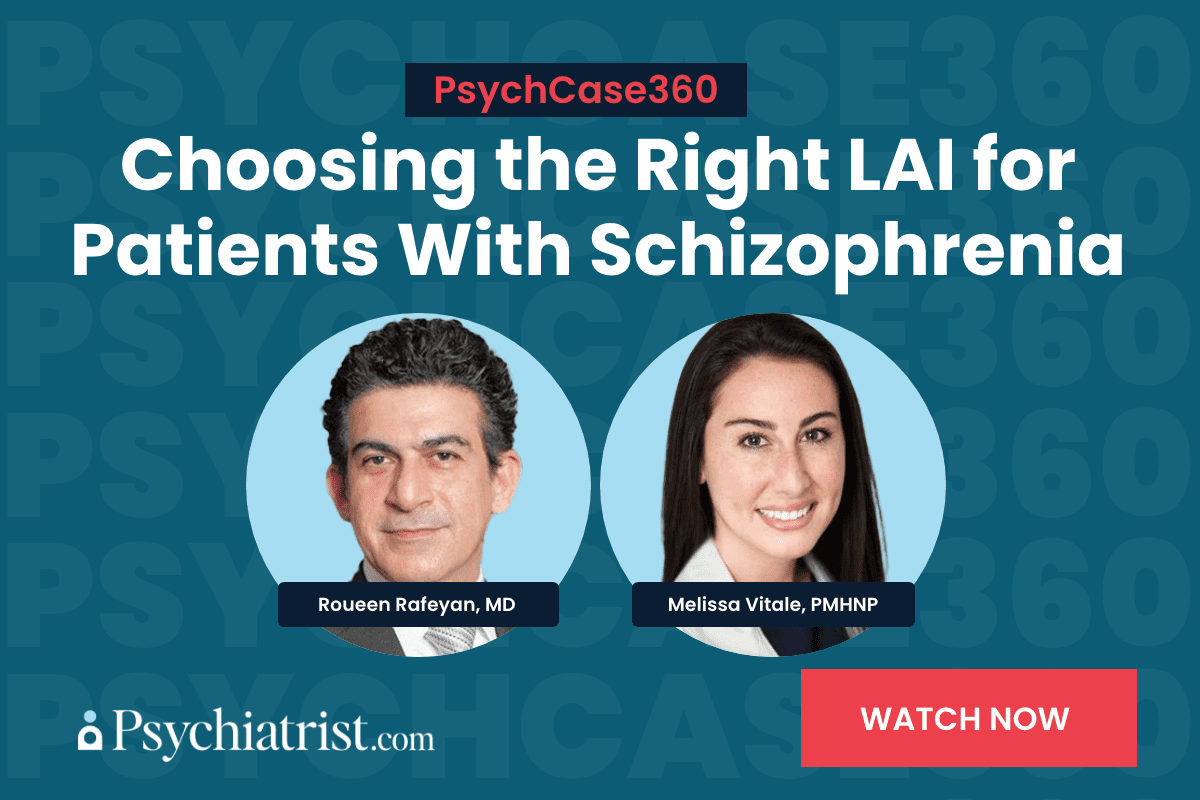As the first schizophrenia medication to introduce a new mechanism of action in nearly 30 years, Cobenfy™ is built on a novel therapeutic pathway and represents a departure from legacy dopamine-receptor based therapies. The treatment combines xanomeline, an M1/M4 muscarinic receptor agonist, with trospium, a peripherally restricted muscarinic antagonist included to reduce peripheral cholinergic side effects.
“This drug takes the first new approach to schizophrenia treatment in decades,” Tiffany Farchione, MD, director of the Division of Psychiatry, Office of Neuroscience in the FDA’s Center for Drug Evaluation and Research, explained. “This approval offers a new alternative to the antipsychotic medications people with schizophrenia have previously been prescribed.”
Trials Demonstrate Positive Acute and Long-Term Efficacy and Safety Data
The registrational EMERGENT program began with three five-week, randomized, double-blind, placebo-controlled studies, EMERGENT-1, -2, and -3, which demonstrated acute symptom improvement, which was maintained through the end of the study, and an acceptable safety profile.
Building on this foundation, researchers conducted two 52-week open-label trials – EMERGENT-4 and EMERGENT-5 – to evaluate the long-term efficacy, safety, and tolerability of xanomeline-trospium (XT).
Representatives presented the results in poster format at the Schizophrenia International Research Society (SIRS) annual conference from March 29 to April 2 in Chicago. The findings demonstrated sustained clinical benefits and favorable safety over one year of treatment.
EMERGENT-4 Trial: Open-Label Extension of Acute Trials
Researchers enrolled 111 participants who agreed to continue treatment from the earlier five-week trials (XT: n=49; placebo: n=62) into a 52-week, open-label extension study. All the participants received XT to assess the durability of treatment response.
EMERGENT-4 Poster Results: Long-Term Efficacy of XT
Results showed that the 49 patients initially treated with XT in the double-blind phase continued to show improvements in Positive and Negative Syndrome Scale (PANSS) total scores and Clinical Global Impression-Severity (CGI-S) scores throughout the 52-week extension.
Perhaps most notably, the 62 patients who had received placebo during the initial trial and transitioned to XT during EMERGENT-4 experienced rapid improvements within two weeks. They fully caught up to the XT-XT group by week 4.
By week 52:
- 88.6% achieved ≥20% reduction in PANSS total scores from baseline
- 68.6% achieved ≥30%
- 60.0% achieved ≥40%
- 37.1% achieved ≥50%
Importantly, the long-term follow-up analysis revealed no evidence of tachyphylaxis (treatment waning).
EMERGENT-4 Poster Results: Long-Term Safety of XT
The SIRS poster presentation demonstrated long-term XT treatment remained safe and well tolerated, with no new safety concerns identified.
Approximately 53% (81/152) of patients reported at least one treatment-emergent adverse event (TEAEs). Most were mild-to-moderate in nature and reflected the known muscarinic activity of the drug combination. Cholinergic side effects such as nausea and vomiting passed quickly and rarely resulted in treatment discontinuation. The most common anticholinergic TEAEs were dry mouth (17.8%), constipation (9.9%), and dyspepsia (8.6%), while the most frequent procholinergic TEAEs included nausea (10.5%), vomiting (6.6%), and diarrhea (5.9%). These events typically emerged within the first two weeks of treatment and were self-limited. Serious TEAEs were reported in 3.6 – 7.4% of participants.
EMERGENT-5 Trial: Long-Term Real-World Evaluation in Stable Patients
The EMERGENT-5 trial expanded the investigation to a broader outpatient population. This follow-up 52-week study enrolled 558 adults with a confirmed schizophrenia diagnosis and stable symptoms (average PANSS total score 66.0 mean CGI-S 3.4 at baseline) who had never been exposed to XT. The multicenter EMERGENT-5 trial provided a real-world look at the drug’s performance in usual clinical settings.
EMERGENT-5 Poster Results: Long-Term Real-World Efficacy of XT
Participants demonstrated consistent and meaningful improvements in PANSS and Clinical Global Impression – Severity (CGI-S) total scores over the 52-week treatment period. Mean CGI-S scores improved by approximately 1 point by Week 52. More than 78% of participants reported “mild,” “borderline,” or “normal” symptom severity after one year.
At Week 52, researchers noted reductions in PANSS total scores in the following proportions of participants:
- 44.9% achieved ≥20% reduction from baseline.
- 30.0% achieved ≥30%.
- 19.4% achieved ≥40%.
- 11.3% achieved ≥50%.
These data suggest that results in the outpatient setting are similar to those observed in the randomized-controlled acute clinical trials where XT delivered clinically significant, sustained benefit.
EMERGENT-5 Poster Results: Long-Term Real-World Safety of XT
EMERGENT-5’s safety study evaluated the onset, duration, and severity of pro-cholinergic and anticholinergic treatment-emergent adverse events (TEAEs) in 566 psychiatrically stable patients with no prior XT exposure. The results mirrored those of earlier trials.
In total, 62.3% of participants reported at least one TEAE. Anticholinergic TEAEs like dry mouth and constipation lasted longer but patients generally tolerated them well. The most common procholinergic TEAEs were:
- Nausea (23.1%).
- Vomiting (20.3%).
- Diarrhea (9.4%).
While the most frequent anticholinergic events included:
- Constipation (18.0%).
- Dry mouth (9.4%).
- Dyspepsia (7.2%).
Only 1.6% of participants reported serious TEAEs.
Similar to EMERGENT-4, researchers identified no new safety concerns. Most adverse events were mild-to-moderate in nature, transient, and self-limiting. Consistent with previous trials, most cholinergic side effects faded quickly, supporting its potential long-term viability.
“Long-term treatment with Cobenfy™ was associated with continued, durable improvements in symptoms of schizophrenia across the PANSS total, PANSS positive subscale, PANSS negative subscale, and CGI-S score over 52 weeks,” said Ken Kramer, PhD, Head of Medical Neuroscience as Briston Myers Squibb. “Schizophrenia is not a one-size-fits-all condition. People face a wide range of symptoms that can be debilitating and impact all areas of someone’s daily life – including positive symptoms like hallucinations and delusions, negative symptoms like lack of motivation or social withdrawal, and cognitive symptoms like memory impairment or difficulty making decisions. It’s encouraging to see continued improvements in symptoms over a one-year period, and in an outpatient population.”
A New Direction in Schizophrenia Treatment
The EMERGENT-4 and -5 data presented at SIRS demonstrated sustained efficacy, an encouraging safety profile, and no evidence of tapering benefits. Taken together, the new evidence highlights XT’s potential to become an important component of long-term schizophrenia treatment.
Further Reading
Global Experts Unveil New Schizophrenia Treatment Guidelines



